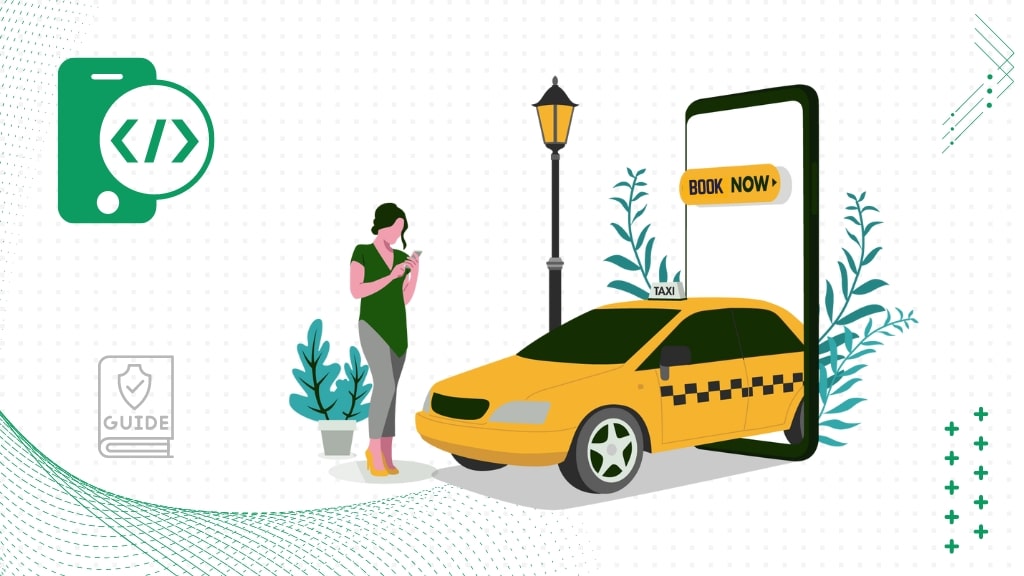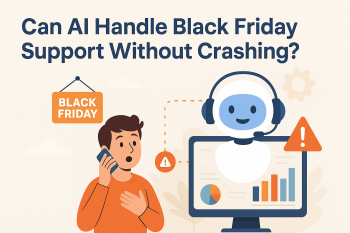Uber has significantly impacted the transport business and has become a best practice for the services apps. The magnificent work of graphics and convenience, together with a robust framework, allows multiple inspiring people to develop such applications in different spheres.
Transportation applications are becoming popular, and many firms are keen to unseat traditional players in the manner that Airbnb unseated traditional hotels, and Uber unseated regular taxi services.
If you want to dive into how to build an app like Uber, this guide will encompass all the significant steps, components, and factors of it.
Understanding the Core Functionality
First, however, it’s important to appreciate what and how to build an app like Uber does at its most fundamental level. These features are divided into three main components: The passenger app, the driver app, and the admin panel.
Passenger App
- User Registration and Profile Management: A passenger wants to register a fast and easy way, which can be possible with the help of email registration, phone number, or by connecting the social profiles. They should also be able to edit their profile, billing information, ride history, and other settings.
- Ride Booking: This is the main gist of the app. Riders should only be able to enter their destination, select a preferred vehicle type, and make the request.
- Real-Time GPS Tracking: Every time a ride is ordered, the passengers can see the driver’s position on the map in real time. This feature is of great utility to the overall user experience because it eliminates such things as wait time anxiety.
- Fare Estimation: It should give an estimated fare that works in deciding on the requested ride in terms of distance, time, and surge.
- In-App Payments: The payment options that should be available for payments should be flexible to include credit/debit cards, digital wallets, or app credits.
- Rating and Reviews: Upon the end of the ride, the passenger should have an opportunity to rate the driver and give some feedback. This ensures that the service delivery and the customer’s confidence in the service delivery is maintained.
Driver App
- Driver Registration and Verification: Drivers should be subjected to verification where a scan of records is conducted on the backgrounds of drivers, car documents, as well as license examination. Once the authenticity of users is attained, they can create their profiles and control the profiles that have already been made.
- Ride Alerts: Car owners get ride requests through notifications in the app. They can either accept or reject the ride depending on the time that the driver proposes.
- Navigation and Route Optimization: The practical usage of the app must include detailed route guidance when the best courses to get to the place are offered. The integration with the mapping services such as Google Maps is quite important.
- Earnings Tracking: The drivers should easily be able to check their earnings, get a summary of their trips, and the ability to manage the payout.
- Rating and Reviews: They should also be able to rate passengers and have a two-way process that will help the two parties behave properly.
Admin Panel
- User Management: The admin panel should help the administrators control passengers and drivers, such as profile approval/rejection, suspension, and support requests.
- Analytics and Reporting: Here, important metrics like volume of rides, revenues, users active on the application, etc., must be provided in the admin panel through the highest level of analysis tools.
- Surge Pricing Management: This way, admins will be able to set & make changes to price surges depending on the prevailing demands in an intelligent way that will optimize resource utilization.
- Payment Management: This panel should be responsible for all monetary transactions, including payments to the drivers, the refunding of passengers and bookings, and the issuing of revenues from these various transactions.
Don’t Miss:- A Complete Guide to Pharmacy Management Software Development
The Development Process
How do you build an app like Uber? There are multiple steps to creating such an app, from the concept to the launch, as in the Uber clone app.
Market Research and Analysis
- Understand Your Market: That is why, before starting work on a new application, it is essential to analyze the market in which you are going to appear. Research your audience, check and research the competition, and establish a few key selling characteristics of your app.
- Legal Considerations: There may be laws and regulations that are set by the government depending on your country or state that regulate ride-sharing services. Always check whether the law in your country allows you to operate this business, that is, insurance laws, driver background checks, and data protection laws.
Scope and Features of the Information System
- MVP vs. Full-Scale App: You will need to decide about having an MVP or a full-scale application at the start for your app. MVP stands for minimum viable product and is a concept that is designed to contain only enough of the product to allow users to test it and gain feedback. Using MVP can be effective in saving time and money, especially for early-stage applications where the overall reception from the users can be addressed before the entire app development process.
- Feature Prioritization: Write down all of the requirements you have for the app, or better yet, rank all of them according to their relevance. It also plans for features to be kept to the barest minimum, with the less important ones implemented in future updates.
How to Select a Proper Technology Stack
- Backend Development: The backend, as it is also referred to as the backend side, is where all the workload of the server side, databases, and the business logic of the app are handled. Some of the general backend technologies are Ruby on Rails and Python. There are multiple platforms available for the repetitive and reliable solution that a business may need; those are AWS, Google Cloud, and Azure.
- Frontend Development: The front end is the one through which the users engage with an application or a website. In the case of mobile applications, the most common way is a Native app development process using Swift for IOS and Kotlin/Java for Android or Cross-Development using technologies like Flutter or React Native.
- Real-Time Features: Some of the features that must be integrated are GPS, notifications, updates, etc, which must be built on a factual real-time basis as in Uber-like app source code. Real-time communication between the app and the server can be done by using the WebSocket, firebase, or MQTT.
- Payment Gateway Integration: Ensure that the payment gateway is interlinked with the online business site and has an efficient and secure mode of processing payments. Examples of reputed payment gateways are Stripe, PayPal, and Braintree, as well as localized payment options based on the customer’s region.
UI/UX Design
- User-Centric Design: The main factors that contribute to the success of how to make an app like Uber are that It should also be easy to use, easy to find what one is looking for, and should be designed well. Design tools that include Sketch, Figma, and Adobe XD should be employed to create a wireframe and prototype.
- Branding and Aesthetics: The target color scheme, typography, and icon used within your application should bespeak the brand. The main principles of creating RIUI are increasing user confidence and subsequent continued use of the application.
- Testing Prototypes: Once a design has been developed, it is recommended that the developer presents a small sample of the developed prototypes to a few users so that the designer can capture any comments that the users may have and modify his designs.
App Development
- Agile Development: should incorporate an Agile process to handle the development phase. Agile splits a project into more minor phases – sprints – during which each of them provides a part of the functionality. This means that the approach adopted is very flexible, and any mishap that occurs can be corrected based on feedback from the targeted population.
- Testing and Quality Assurance: You want to make sure your app runs like a charm, and for this, you need to perform extensive testing. Carry out unit testing, integration testing, and user acceptance testing (UAT) to detect code bugs. With an application such as Selenium or Appium, it is possible to automate this process.
- Continuous Integration and Deployment (CI/CD): You will need to build a CI/CD pipeline for tests and app deployment. Jenkins, Travis CI, and CircleCI can be used to incorporate these into your app development process life cycle.
Launch and Marketing
- Beta Testing: To test it out, you should make a beta version of the app and launch it to a more restricted base of users. It keeps users’ attention on the app and allows for the identification of any problems that may arise in the final days before the release or actual use.
- App Store Optimization (ASO): Enhance the status of your application in the App Store and Google Play markets. Ensure that you write good, relevant keywords, good descriptions, and high-quality screenshots or videos.
- Marketing and User Acquisition: Create a market for consumers by providing its target market with the reasons why they should use the specific social networking site chosen by the company. This could entail social media marketing, influencer marketing, content marketing, and more, especially the paid kind. It is also possible to try to encourage more users to download the app in the first place by providing bonuses like referral links or giving users a download and get a discount type of promotion.
- Launch: Finally, once you are through testing your app and ready to sell it, your next step is to bring it to the market. Be keen and track the launch to attend to any problems that may occur together with making some modifications.
Must Know: –Healthcare Mobile App Design: Key Guidelines
Post-Launch Considerations
App distribution begins quite simply after the app is released. To stay and grow in the long term, undoubtedly, it is necessary to work on improvement and scaling.
User Feedback and Updates
- Collecting Feedback: Collected user feedback through surveys, ratings, and feedback given in the application and customer support section. These are issues and new features that can be identified from the feedback that you will receive from the customers.
- Regular Updates: Free update new version bug fix, performance optimization, add new features and enhancements. Thus, to have a strong base of loyal customers, it is essential to update the app continuously and meet people’s needs.
Scalability and Performance Optimization
- Backend Scalability: You must be ready for it and able to manage your back-end to supply for a more significant number of users. It is recommended to use microservices architecture and auto-scaling properties of cloud vendors when making an app scale.
- Performance Monitoring: Employ 3rd party performance monitoring tools like New Relic, Datadog, or Google Analytics to check the performance of your application. It is also imperative to look for any constraints that could disrupt the wanted flow of the program; thus, it is necessary to eliminate them as well.
Security and Compliance
- Data Security: Secure user data from theft and improper user access through encryption, secure authentication, and a security audit on the website. Make sure that your application adheres to laws such as GDPR, HIPAA, or any other applicable laws.
- Compliance Updates: Someone should monitor empirical changes that may impinge on the application of the regulations. Ensure you change the terms of service and privacy policy of the app frequently to avoid contravening the law.
Expanding Features and Services
- New Features: Pay attention to the feedback from the users and the general market conditions, and decide on new features that will improve consumer satisfaction. For instance, you may offer ridesharing by proposing cars and carriages, cycling as a mode of transport, or delivery services.
- Geographic Expansion: Once a force is established in one app, it is advisable to try other markets with the force. This involves the ability to redesign the application in another language set, different currencies, and other regulative policies.
Also Read:- How to Build a FinTech App: A Step-by-Step Guide
Conclusion
As far as the possibility of further development of on-demand taxi-booking apps is concerned, customer interest is likely to keep increasing. While other cab/taxi-booking giants such as Uber and Lyft are already well and truly ensconced within the sector and expanding at a pace in the international market, there is still plenty of white space here for challengers to capture. If you ever need any help or want to tap into our extensive experience in building scalable and user-friendly software, then visit Provis Technologies and hire mobile app developers who will help you build your dream app like Uber.
Written By
Author's Picks
- Top Mobile App Development Platforms
- 12/07/2023
- What Is The Importance Of UI/UX Design For Building Engaging Mobile Apps
- 22/12/2024
- A Complete Checklist to Build a Secure Mobile App
- 20/08/2024
Categories
- AI for Startups
- AI in Web Development
- AI Integration
- AI Platforms
- AI Prompt
- AI Tools
- AI Trading Software
- Android App
- Android vs iOS Development
- Angular
- API
- API Development
- App
- app development
- App Idea
- App User Feedback
- Application
- Artificial Intelligence
- Audit Services
- Automotive Industry
- Awards and Recognition
- Business Consulting
- Business Website
- Chatbots
- CRM
- CRM for Financial Advisors
- Custom CRM
- Custom SaaS
- Custom Website
- Customer Service
- dashboard design
- Developing a Mobile App
- Digital Business
- E-commerce
- EMR Integration
- Finance
- Financial Advisors
- Financial Advisors
- GIT
- Health Insurance
- iOS App
- iOS App Development
- IoT Mobile App Development
- IoT Platforms
- IT Audit Services
- IT Consulting
- IT Strategies
- Java Development
- Laravel
- Lean Canvas
- Learning Management System
- Logistics Apps
- Mobile App Development
- MVP
- Native App
- News Aggregator Site
- OTT
- Outsourcing IT
- Payment Gateway
- predictive analysis
- Product Launch Strategy
- Progressive Web App (PWA)
- Prototype
- Recommender Systems
- Ruby
- SaaS
- SaaS Application
- SaaS Business
- SaaS Company
- SaaS Development
- SaaS Product
- SaaS Project
- Sales Funnel
- SEO
- Shopping Cart
- Software Development
- SSL and TLS
- Startup Checklist
- Technology
- Tetradic Color Scheme
- UI/UX Design Company
- Unit Testing
- User Flow
- User Testing
- Web Development
- Web Performance Optimization
- website Maintenance Services
- Website Migration Service
- Website Speed Optimization
- WooCommerce
- WordPress





